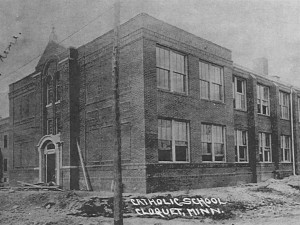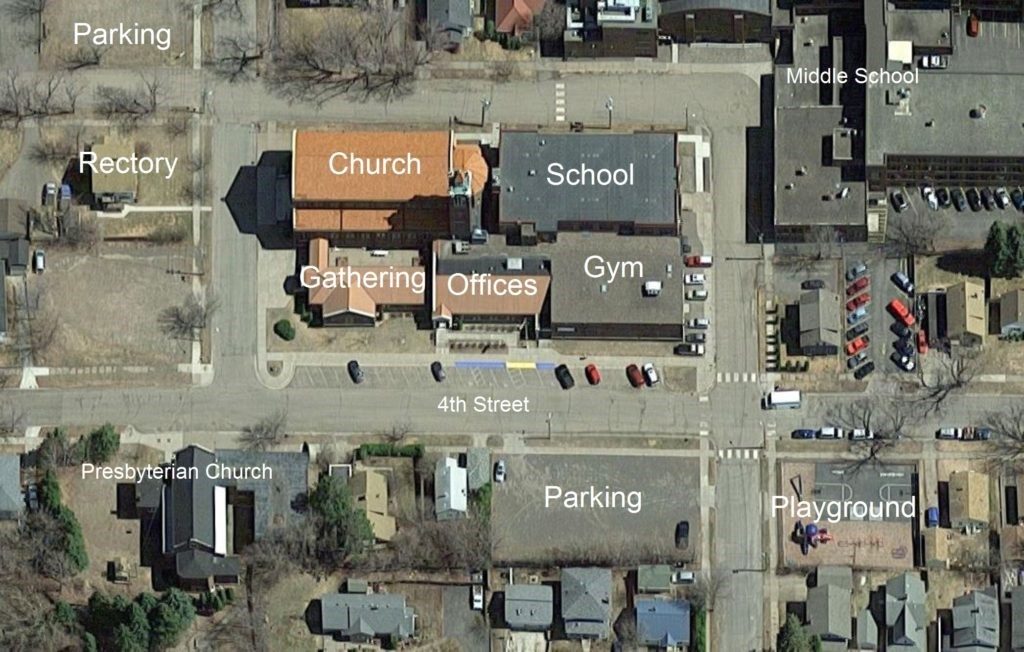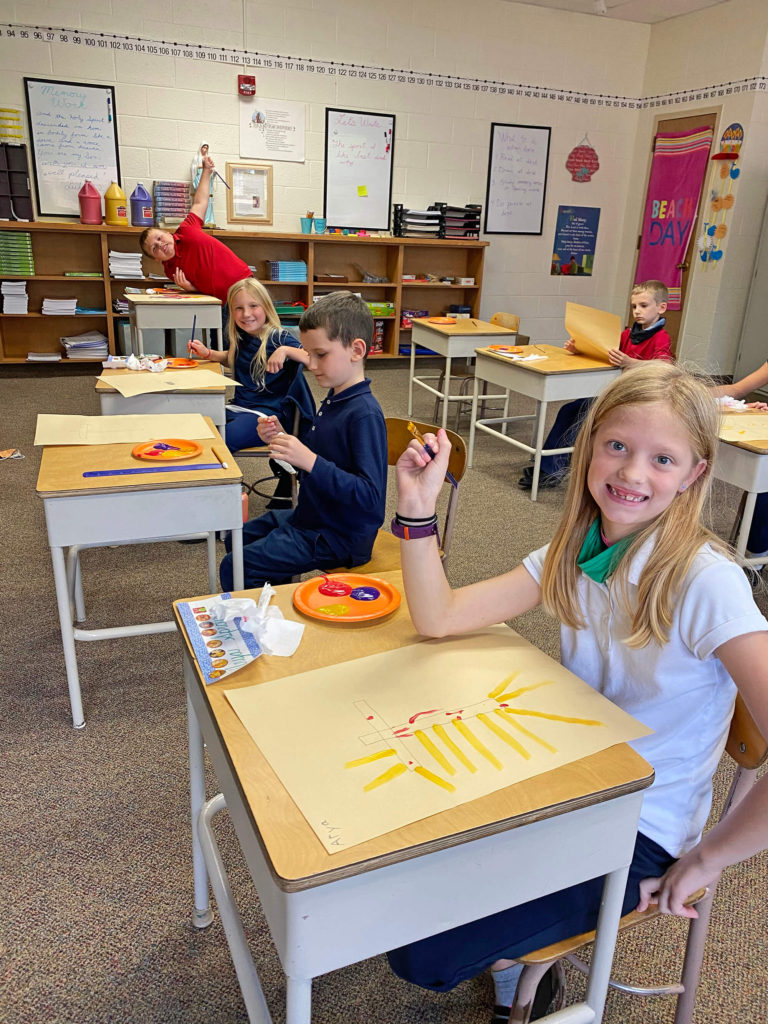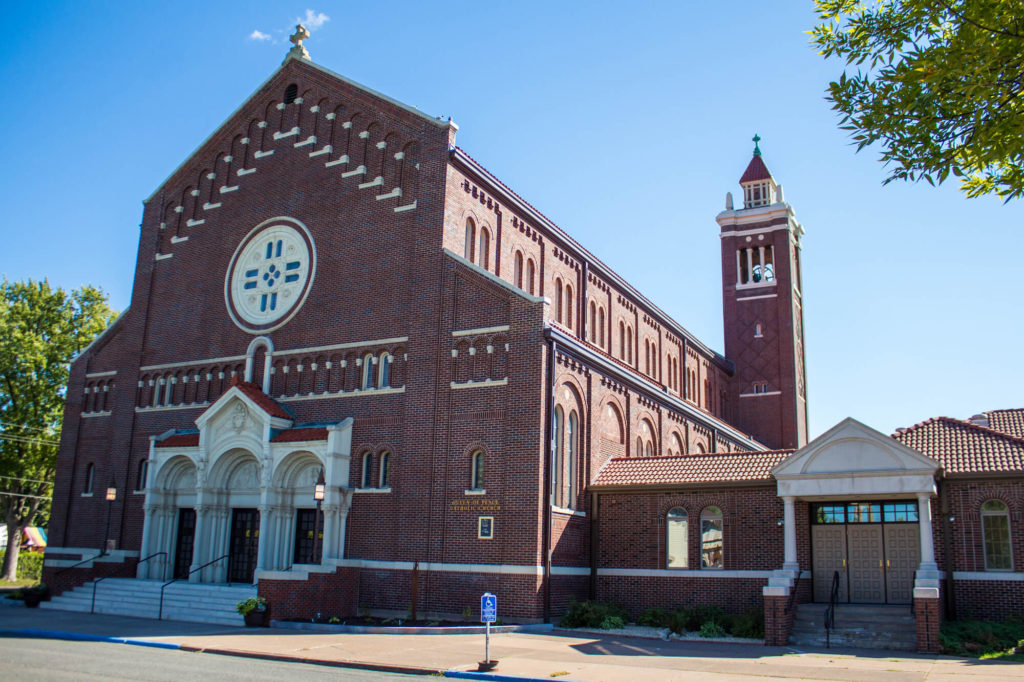
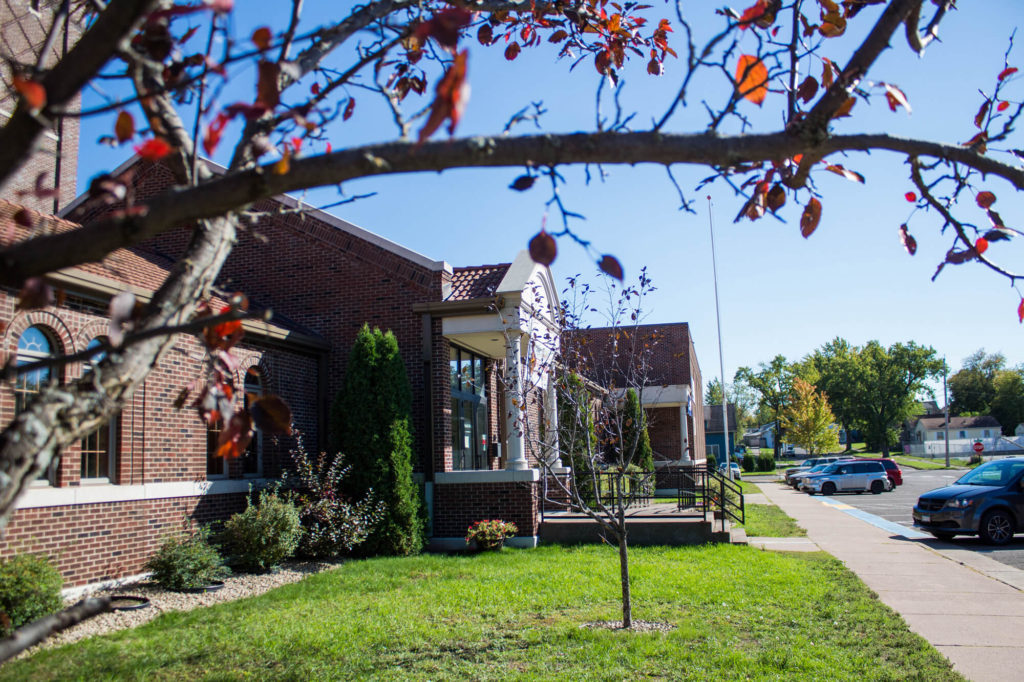
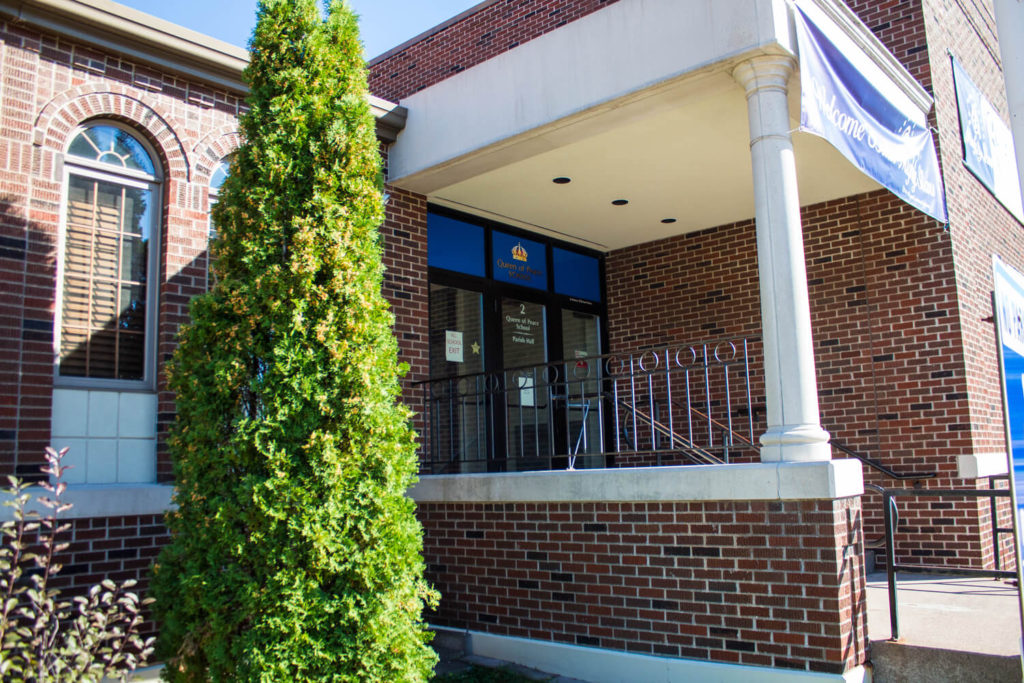
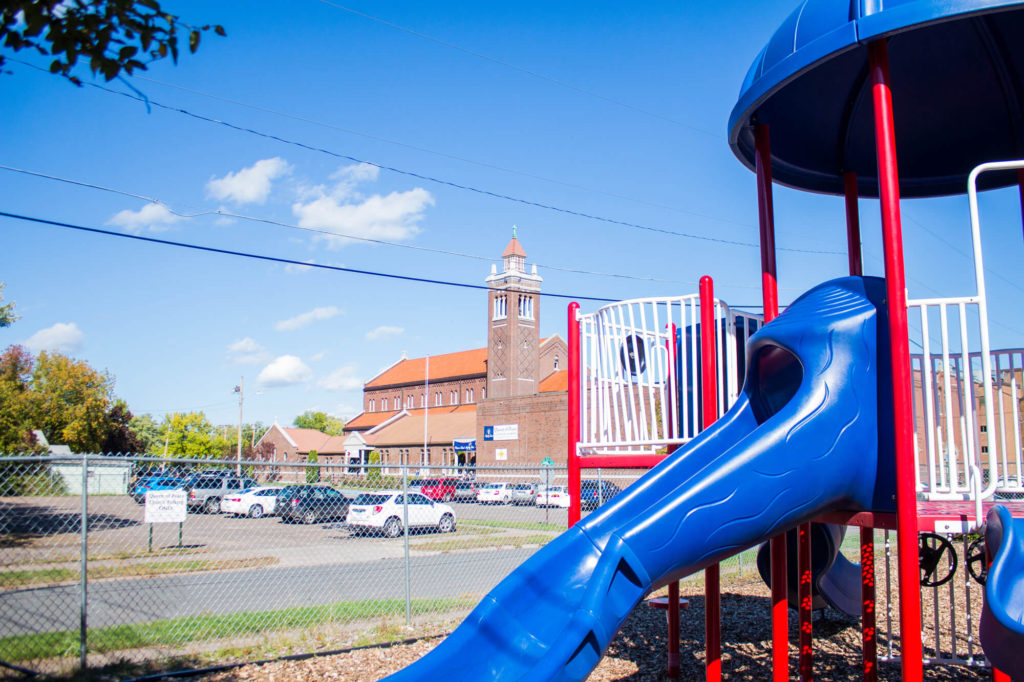
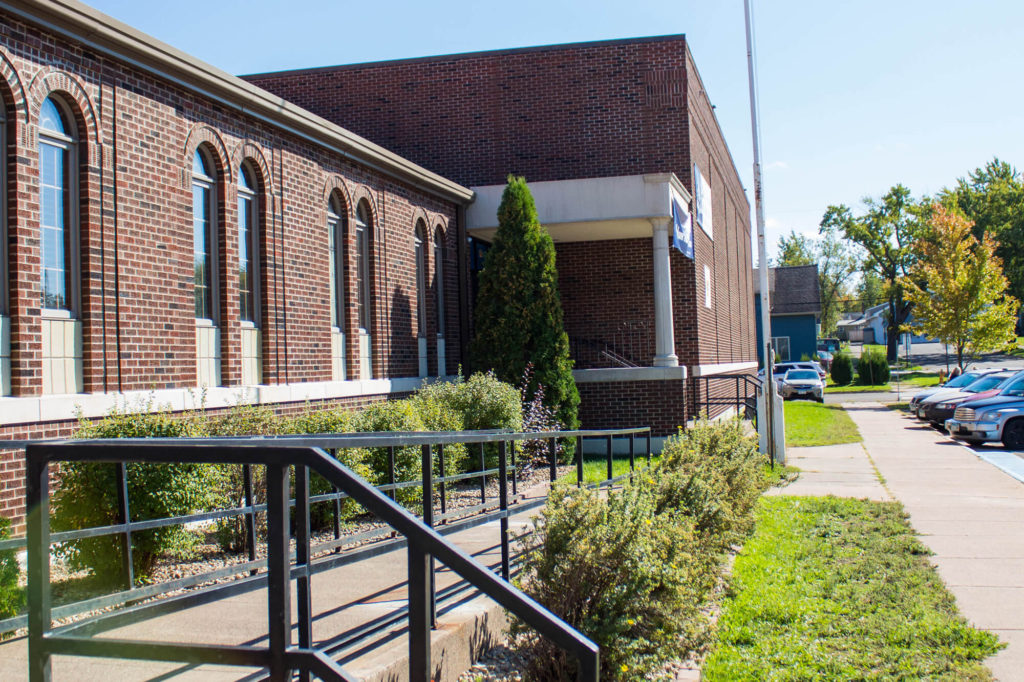
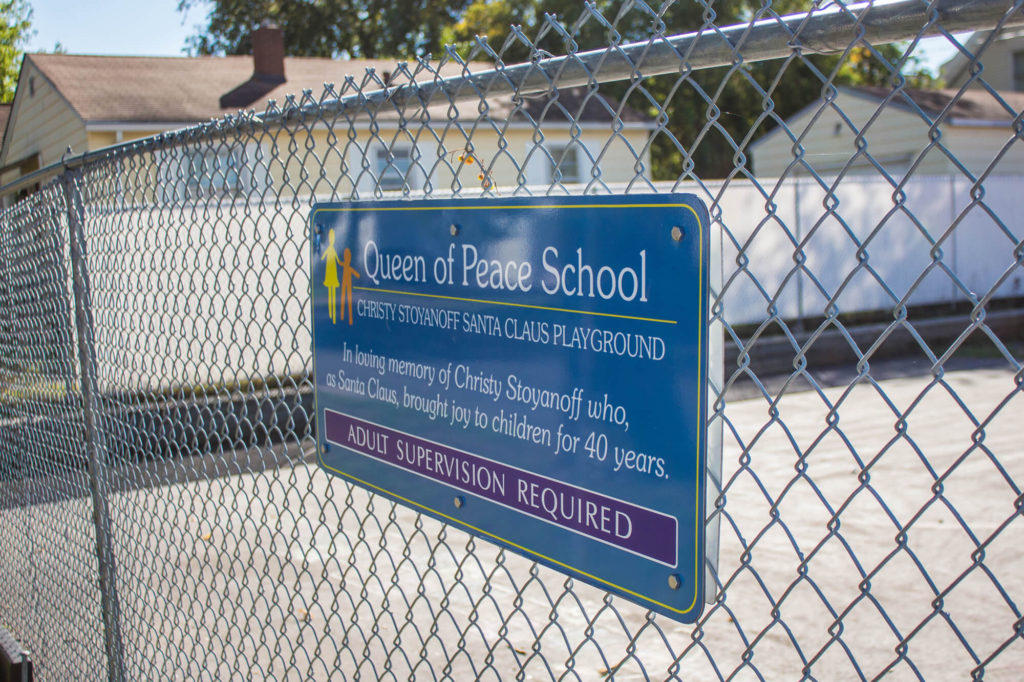
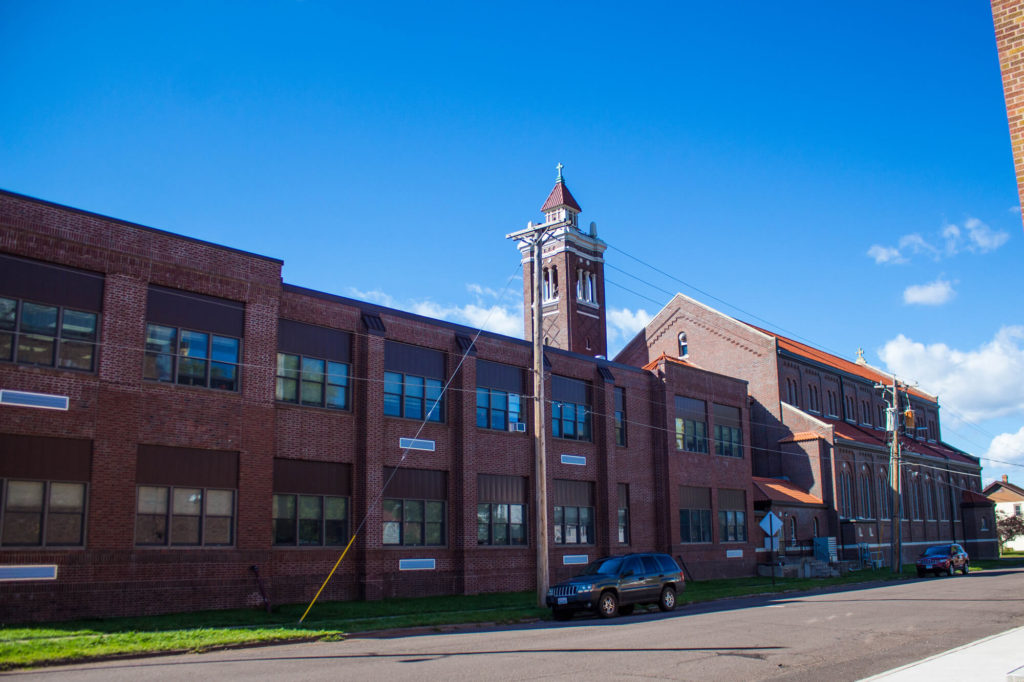
Our History
“A Tradition of Excellence Since 1912”
In the 19th century, when the culture of the United States was predominantly Protestant, anti-Catholic sentiment became widespread in response to major movements of immigration from Catholic countries like Germany, Ireland, and Italy. Many people – including venerable American figures like Mark Twain – spoke of the need to address what they saw as a dangerously increasing Catholic identity in America. There were calls for Catholic children to be educated in public schools to “become American,” as opposed to remaining culturally distinct, as Catholics. A strong movement opposed to giving tax-payer funds to parish schools also emerged. In the 1880s, thirty-seven states, including Minnesota, passed constitutional amendments (called “Blaine Amendments) that blocked the use of our tax dollars for our own schools, on the pretext of concern for church-state separation. We must remember that this was a time when nearly all public school programs were openly Protestant, so the idea of religious content being objectionable, as such, had not yet occurred in America. Instead, the Blaine Amendments were aimed at American Catholic communities specifically. However, as Providence would have it, the attempts to discourage Catholic education also came at a time when the United States Catholic bishops were building toward the greatest call for Christ-centered education that has, perhaps, ever been made.
At the Third Plenary Council of Baltimore, in 1884, the U.S. bishops declared that every Catholic family must [1.] teach their children at home or [2.] send them to Catholic parochial school, in order to avoid the mortal errors that tainted views presented in American public education, even in those days. To aid Catholic families in these duties, the bishops also declared that every parish must endeavor to build a Catholic school for the godly education of their families’ children.
Catholic people across America, and many more as missionaries sent from Europe, answered the bishops’ call. The American Catholic school movement was especially led by heroic generations of young women, who consecrated themselves to Christ as members of religious teaching orders, for the work of teaching our children. Already by the 1890s, an extensive network of Catholic parish schools had been completed, and by the high-water mark of the American Catholic parish school, in the 1960s, Catholics had built the largest non-public “school system” ever to be raised, anywhere, in history. To this day, as measured by consistent sociological research at both secular and religious higher-learning institutions, Catholic schools set the American gold-standard in faith-filled instruction, in academic quality, and in community vitality.
It was wrong to consider Catholic culture un-American. Catholics are deeply patriotic. Patriotic duties are extensions of our reverence for family, which, in turn, is part of the reverence we owe to God Himself. But it is true that our schools are built to convey a different culture, and it is true that our culture does not espouse the same values found in the American mainstream.
Today’s mainstream American culture, for instance, intentionally bases itself on the impossible idea that man can live without dependence on God. It claims that man can decide the truth for himself, especially with regard to the moral life. This mistake is sometimes celebrated as the height of democratic practicality, with the excuse that “no one can agree about” who God is anyway, or “no one can truly know” whether God exists or what He might wish if He does.
In reality, God has revealed Himself sufficiently throughout creation, and also within our own hearts, so that all men of good will can recognize Him (confer CCC 27-35). Furthermore, God has revealed Himself personally and has revealed His will for relationship with mankind – again with sufficient proofs for all men of good will to believe – in the person of Jesus Christ (confer CCC 65). Jesus founded the Catholic Church to be Our Mother and also to be His voice on earth, and the proof of Her supernatural identity is in the lives of Her saints, the blood of Her martyrs, Her apostolic lineage, Her universal character across the world and time, and the miracles of every kind that have continued wherever She is found, from the time of Christ until today. Jesus calls all men to Himself through the Church, for the sake of our eternal salvation (confer Lumen Gentium 14-17). Understanding these things and responding rightly is the purpose of our earthly lives.
Accordingly, Catholic people openly avow the right of Christ, the true and living King, over every nation and every human heart: not just in theory but in real, day-to-day, personal, social, political, and legal practice. This is seen in the consistent language used by our popes, bishops, and councils, when they address the peoples of the world. It is our constant prayer, as we cry “Thy Kingdom come on earth as it is in heaven.” Because we know there will be a particular judgment for each individual at death and a final judgment of mankind, as a whole, at the end of time, justice and charity both demand that we bend this world toward these deepest measures of reality. It is the job of every Catholic to do his small part to advance Christ’s Kingdom on this earth, beginning with the details of his own life and working out from there (confer Lumen Gentium 17).
Public schools teach a contrary worldview, which even devolves to the radical anti-gospel of “let every man serve himself,” especially with regard to the moral life. This teaching is deadly. As a result, generations of American Catholics have had unfortunate need to limit our children’s exposure to the anti-Christ ideology in state school curricula. We know: to present any worldview that is blind to the reality of Christ is a mistake and to teach anything contrary to the moral rule of Christ is a mistake with grave consequences. This was true in 1884, at the Third Plenary Council of Baltimore. It is just as true today. One of the highest duties of the Catholic family is to ground our children’s fortunes – for this world and the next – upon the foundations Christ has laid. Above all else, Catholic schools are missions to parents to help them do this.
Queen of Peace Catholic School was founded in 1912, when our parish was named Our Lady of the Sacred Heart. The Benedictine Sisters from The St. Scholastica Priory were invited to teach in the school from its very beginning. The Great Cloquet Fire of 1918 destroyed the school along with the church, the rectory, and the convent. However, after the fire, Catholic school was so important to our families that the school building was rebuilt before anything else, and our classes continued, uninterrupted, in make-shift accommodations all through construction. Our new school building was completed within a year of the tragic fire that destroyed the entire city. The school hall served as the church for the congregation until 1926 when the beautiful church, which stands today, was completed.
Over the years, vocations to the religious life were encouraged. Between 1912 and 1960, around 40 female students from Our Lady of the Sacred Heart school eventually entered the Benedictine sisters of the St. Scholastica Priory themselves. They served Christ in this diocese and beyond. During these years, the school enrollment averaged around 300 students-a-year. However, as vocations declined in the years following the Second Vatican Council, the St. Scholastica Benedictines eventually found it prudent to reduce, and finally end, their commitments to staffing in our school. They left Our Lady of the Sacred Heart in 1975, after sixty-three years.
In 1976 Bishop Anderson and Fr. Paul Fruth invited the Franciscan Sisters of the Eucharist to the Diocese. Here at our school, Father Fruth sought to continue the educational apostolate with help from the incoming Franciscans. The Franciscan Sisters of the Eucharist then served the school for 25 years.
By the 1980s, in spite of a vibrant school community led by Mother Colleen Kimbro, FSE, the actual school enrollments had began to shrink, until they sat at about half of the levels of our first six decades. In the 1990s, enrollment declines continued, until we stood at only a third of the 300-student-a-year high-water mark. Such declines are explained by a changing culture within the American Catholic community itself, manifested in less of a sense of distinctiveness from our non-Catholic neighbors, less children being born at all, and an increasing willingness to simply send the children we are having to the public school. As mentioned above, the general decline in distinctively Catholic culture also manifested in a lack of vocations to the priesthood and consecrated life. In this challenging climate, it became inevitable that the two Cloquet parishes – St. Casimir’s and Our Lady of the Sacred Heart – would have to combine, for efficiency. This occurred in 1989. The combined parish was renamed Queen of Peace and was located in the Our Lady of the Sacred Heart facility. The school’s name became Queen of Peace at this time, as well.
However, a consolidation born of new challenges also meant new opportunities. Pastor Seamus Walsh had the old convent torn down and replaced with a large addition which included our current gymnasium. The school was turned over to lay leadership from 2001-2008. Then, Sister Therese Gutting, FSE, returned to lead the school again in 2009. During her four years as principal, Sister Therese oversaw a $4 million rebuild and remodel of the school, which included the addition of an elevator and classrooms in the basement. Sister Janet Siepker, FSE, took over the leadership of the school in 2012 until the Franciscan Sisters were finally called away from Cloquet in 2016. Queen of Peace Catholic School (QPCS) is once again under lay-administrative leadership and staffed by lay faculty.
Today, we are growing again. The school offered education from grade 1 to 8 for many decades, but there was a restructuring in 1970, so that we only offered classes up to grade 6 for the next forty-eight years. In 2018, pastor Fr. Justin Fish and principal David Douglas made the decision to expand the school through 8th grade, once more. The expanded structure commenced with a new 7th grade in the fall of 2019 and completed with a new 8th grade in the fall of 2020. Until the expansion, QPCS 6th grade graduates usually transferred to the Cloquet school district at 7th grade, halfway into the four-year Cloquet middle school program. It was an awkward transition point. The new PreK-8 structure allows Queen of Peace students to graduate from our school at a more natural transition point: the beginning of high school.
When the Mater Dei Apostolate opened its doors at Holy Family parish in West Duluth in 2019, offering a homeschool-hybrid model for Catholic high school students, we celebrated the fact that our families again had the option of completing their entire elementary, middle school, and secondary experience in Catholic environments, for the first time since the Duluth Cathedral School became secular in 1987. In 2021, with the announcement of plans for a new diocesan Catholic high school at Stella Maris Academy, in Duluth, our Catholic secondary choices continue to grow. We look to the future of these missions with hope and gratitude to God, the Author of every good thing.
Mr. Douglas led the school as principal from 2018 until June 2023. Fr. Nick Nelson has been President since the summer of 2021. Mrs. Karin Sabyan has been the Vice Principal and Pre-grade Director since 2020, and Mrs. Melissa Marti has been the school principal since the 2023-2024 school year.
